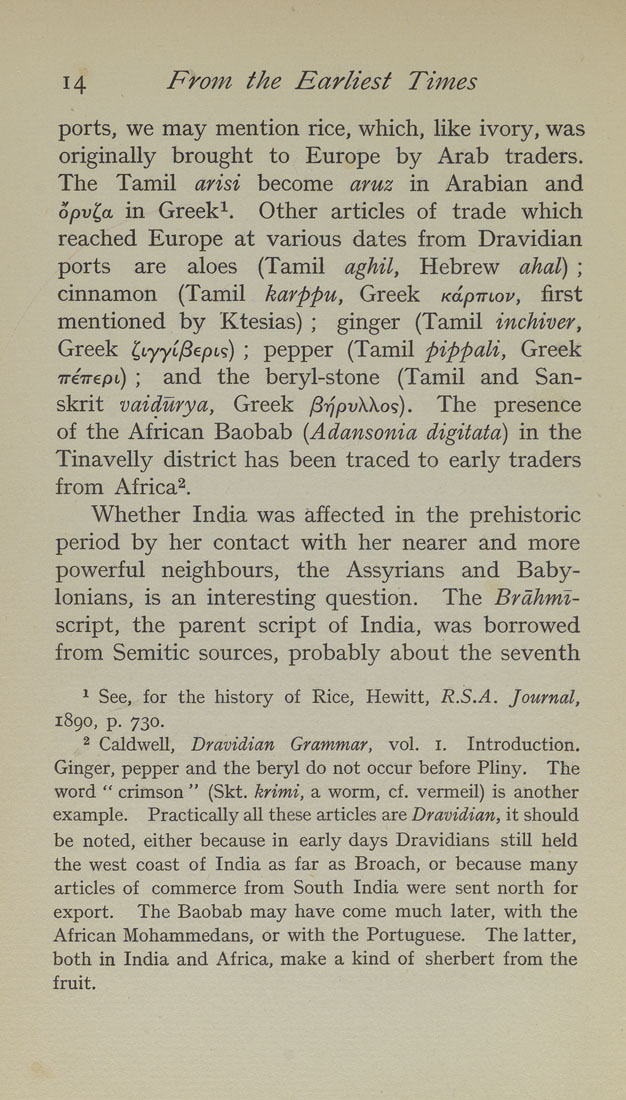14 From the Earliest Times
ports, we may mention rice, which, like ivory, was
originally brought to Europe by Arab traders.
The Tamil arisi become aruz in Arabian and
opvlp. in Greek^. Other articles of trade which
reached Europe at various dates from Dravidian
ports are aloes (Tamil aghil, Hebrew ahal) ;
cinnamon (Tamil karppu, Greek Kapinov, first
mentioned by Ktesias) ; ginger (Tamil inchiver,
Greek ^tyyt^Septs) ; pepper (Tamil pippali, Greek
TTcVepi) ; and the beryl-stone (Tamil and San¬
skrit vaidurya, Greek ^TJpvXko^). The presence
of the African Baobab (Adansonia digitata) in the
Tinavelly district has been traced to early traders
from Africa^.
Whether India was affected in the prehistoric
period by her contact with her nearer and more
powerful neighbours, the Assyrians and Baby¬
lonians, is an interesting question. The Brdhrni-
script, the parent script of India, was borrowed
from Semitic sources, probably about the seventh
* See, for the history of Rice, Hewitt, R S.A. Journal,
1890, p. 730.
^ Caldwell, Dravidian Grammar, vol, i. Introduction.
Ginger, pepper and the beryl do not occur before Pliny, The
word " crimson " (Skt. krimi, a worm, cf. vermeil) is another
example. Practically all these articles are Dravidian, it should
be noted, either because in early days Dravidians still held
the west coast of India as far as Broach, or because many
articles of commerce from South India were sent north for
export. The Baobab may have come much later, with the
African Mohammedans, or with the Portuguese, The latter,
both in India and Africa, make a kind of sherbert from the
fruit.
|








